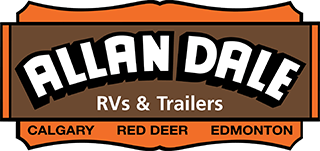How to Level Your Travel Trailer
 Once you’ve gotten to where you’re going with your travel trailer in tow, there are some steps that you have to take in order to get it properly set up for camping. One of the most important steps to perform is leveling your travel trailer. Some RVs may come with automatic leveling features, but if you don’t have that type of trailer, then you’ll need to do the leveling yourself. Leveling your travel trailer helps to ensure that you don’t feel off-kilter when moving around inside and that water doesn’t pool up in drains because your whole trailer is at a slant. Fortunately, this process doesn’t take too long and it isn’t too difficult if you know where to start.
Once you’ve gotten to where you’re going with your travel trailer in tow, there are some steps that you have to take in order to get it properly set up for camping. One of the most important steps to perform is leveling your travel trailer. Some RVs may come with automatic leveling features, but if you don’t have that type of trailer, then you’ll need to do the leveling yourself. Leveling your travel trailer helps to ensure that you don’t feel off-kilter when moving around inside and that water doesn’t pool up in drains because your whole trailer is at a slant. Fortunately, this process doesn’t take too long and it isn’t too difficult if you know where to start.
Allan Dale Trailers & RVs is your Edmonton travel trailer dealer. Here’s how we recommend you level your travel trailer so that you’re more comfortable staying in it during your vacation.
1. Locate a Suitable Spot
Your campsite may or may not allow you much room to move around. If you’ve got a flat concrete pad, then this step is easy, but if you’re working with dirt, then you need to find some level ground. Try to make sure you’re not on top of gravel, sand or other loose materials that could shift while you’re leveling.
2. Level From Side to Side
Keep your trailer attached to your towing vehicle for most of this process, since you'll need to go back and forth a bit to make your trailer even. Park it on flat ground and use a level to determine just how much you need to move one side up or down to make it level with the other side.
Now, get back in your towing vehicle and move the entire trailer forward a bit so that you can put leveling blocks where your tires will rest in order to lift up the trailer. Reverse into that position and check how even it is again. You’ll have to do this several times before you’re level from side to side.
3. Secure & Unhitch
Once you’ve leveled your trailer from left to right, you can unhitch your towing vehicle and drive it out of the way to finish the leveling process. Place chocks in front of and behind your trailer’s wheels to keep it in place.
4. Level From Front to Back
Your next step is to use the jack that came with your trailer to adjust your hitch until your level is balanced from front to back. Lock your hitch into place when this step is complete.
5. Stabilize Your Trailer
The last step in this process is to stabilize your travel trailer. After all, you don’t want to have gone through the trouble to level your travel trailer in every direction only to step inside and set everything off-kilter again!
Your travel trailer comes with stabilizers at each of its four corners, which act as jacks to hold your trailer in place. Many models even have a tool that allows you to raise and lower your stabilizers if they don’t move automatically. Some people attach this tool to a power tool to make the process go faster. Ensure that each jack is firmly pressed into the ground without being too deep.
You may have the notion that you can use these jacks to level your trailer, but this is a bad idea for a few reasons. First, this will be extremely inefficient, since every adjustment will require you to change the other three over and over, and it’ll end up taking longer than the process outlined above. Second, the jacks are only meant to stabilize and support the weight of your travel trailer, not to adjust beneath its weight. So be smart and use the method we’ve recommended to spare yourself some expensive repairs!
Seeking travel trailers for sale in Alberta? Browse through our website to take a look at our full inventory of new and used travel trailers for sale at our dealerships in Edmonton and Red Deer, AB. Allan Dale Trailers & RVs proudly serves all of our Alberta customers.



